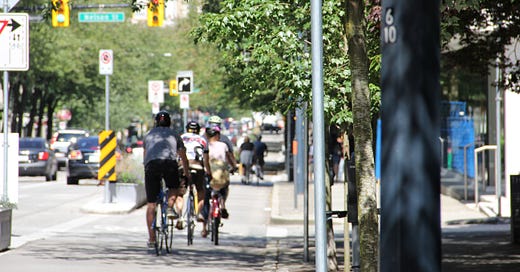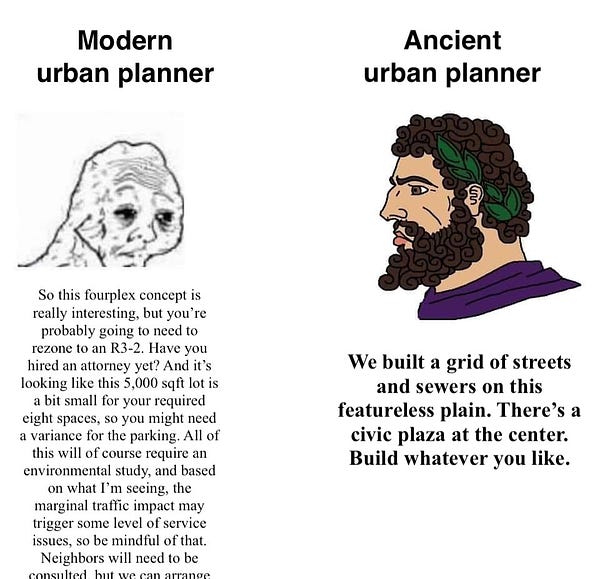image via Flickr
Happy Friday,
Last summer while I was furloughed from my job, I undertook what has become a quintessential American task: the cleaning out of a storage unit.
There are few things in this country anymore that scream bald eagles and apple pie quite like paying a company an ungodly sum of money every month for a 20x10 locker to store a bunch of stuff you haven’t needed in a long time (and will actually never need again), but can’t bring yourself to part with.
I sifted through cardboard boxes, 30-gallon trash bags, broken furniture, and old sports equipment. Among that trash, though, I did stumble upon one piece of treasure: a bicycle.
I haven’t owned a bike since I got my driver’s license in 1996, and to this day I’m not entirely certain where the one in the storage unit came from, but when I saw it I got excited. Like baking bread (which I didn’t do) and growing facial hair (which I absolutely did do), riding a bike became a symbol of quarantine life in the pandemic.
This one very clearly had not been used in years, so I took it to the local cycle shop, had them give it a restoration treatment, and spent a week waiting, researching, and plotting out my first ride. It turns out, I found, that the area I live in will not be mistaken for a biking utopia anytime soon.
Had I not found that bike in the storage unit, I don’t know that I would have noticed how lacking the active transportation infrastructure is in my town (and it’s actually much better than most of the surrounding towns).
In much the same way, if I hadn’t seen a Twitter thread, I would not have been introduced to Carmel, Indiana, and the shift in perspective that its leaders used to develop one of the most extensive - and beautiful - active transportation systems in the United States.
Alternatives to the automobile are having a moment in urbanist discourse, it seems. The benefits are readily apparent in the realms of public health, social equity, and local economic vitality. But we need to embrace them as a viable means of transportation, not simply as recreation or a hobby, to deliver the full effect of those benefits.
Every Friday I send this newsletter out with:
Something I wrote, and;
A few things I read, watched, or learned that I found value in and think are worth sharing.
I hope you find this email to be in some way informative, thought-provoking, and valuable. Feel free to let me know what you think in the comments.
And if this is your first time reading Rust Belt Future, I hope you will consider subscribing by clicking the button below.
Something I wrote
The active transportation infrastructure in Carmel has been like a song stuck in my head all week. I wrote about it on my blog and over at Medium.
Representative line from the piece: “Instead of treating a bike trail as purely recreational, the city started to treat it like they would a road. Bikes, just like cars, seen as a means of transportation.”
Some Things Worth Checking Out
I quoted this 2019 story about Carmel extensively. Shout out to Cleveland’s own Dan McGraw for some great reporting!
“Ultimately the best, most proven way to curb speeding, and thereby create streets that are platforms for congregating and value-generating activity, is to use design,” wrote Daniel Herriges in this 2020 article for Strong Towns.
Kyle Gulau has become a must-read for me on Medium. This piece about marketing ideas in the urban planning field is pure genius, and something I’m sure to be employing in my work.
If we want our cities to grow, we should make building things easy. If we want them to stagnate, we should keep doing what we’re doing:
NOACA, the Metropolitan Planning Organization for Northeast Ohio, is seeking feedback on its long-range transportation plan, eNEO2050. The nonprofit organization Bike Cleveland has some concerns.
Phoenix Coffee in Cleveland transitioned from a traditional business to a worker-owned cooperative during the pandemic, as Belt Magazine reports. This is part of a growing trend across the Rust Belt amid declining union power and increasingly predatory employment practices by large corporations.
Thanks for reading!
If you’ve enjoyed Rust Belt Future and want to support it, please forward it to someone you know who you think would like it.
If you’re seeing this newsletter for the first time, you can subscribe by clicking the button below.






